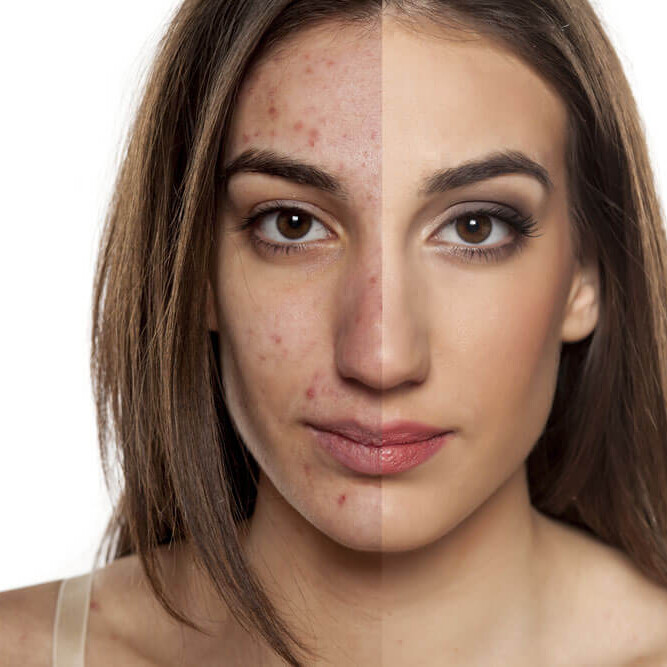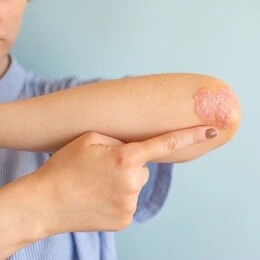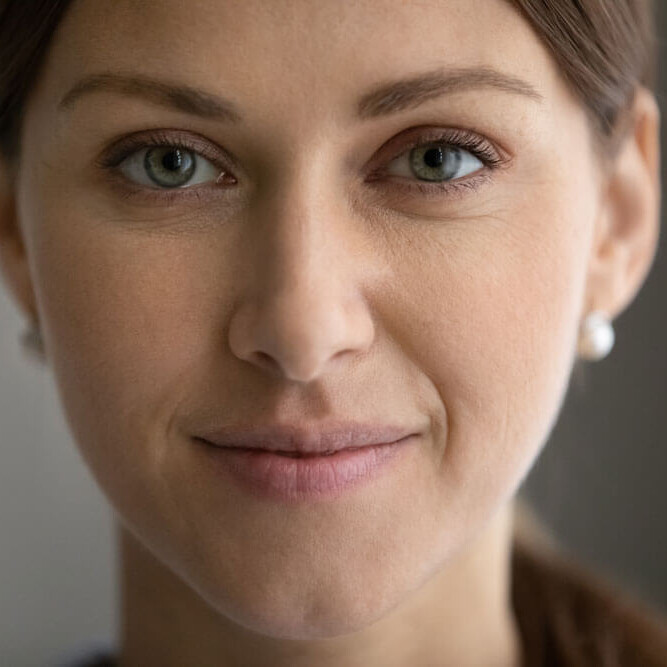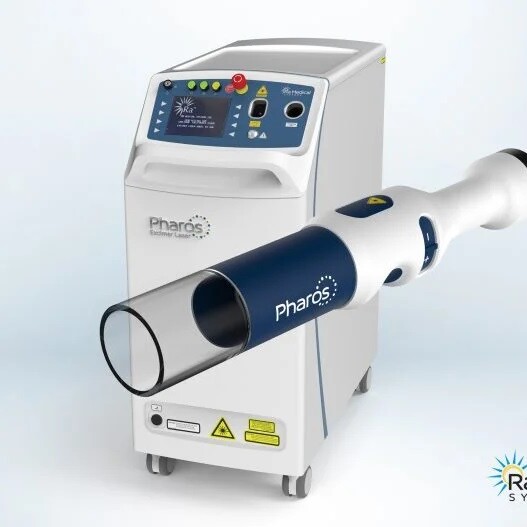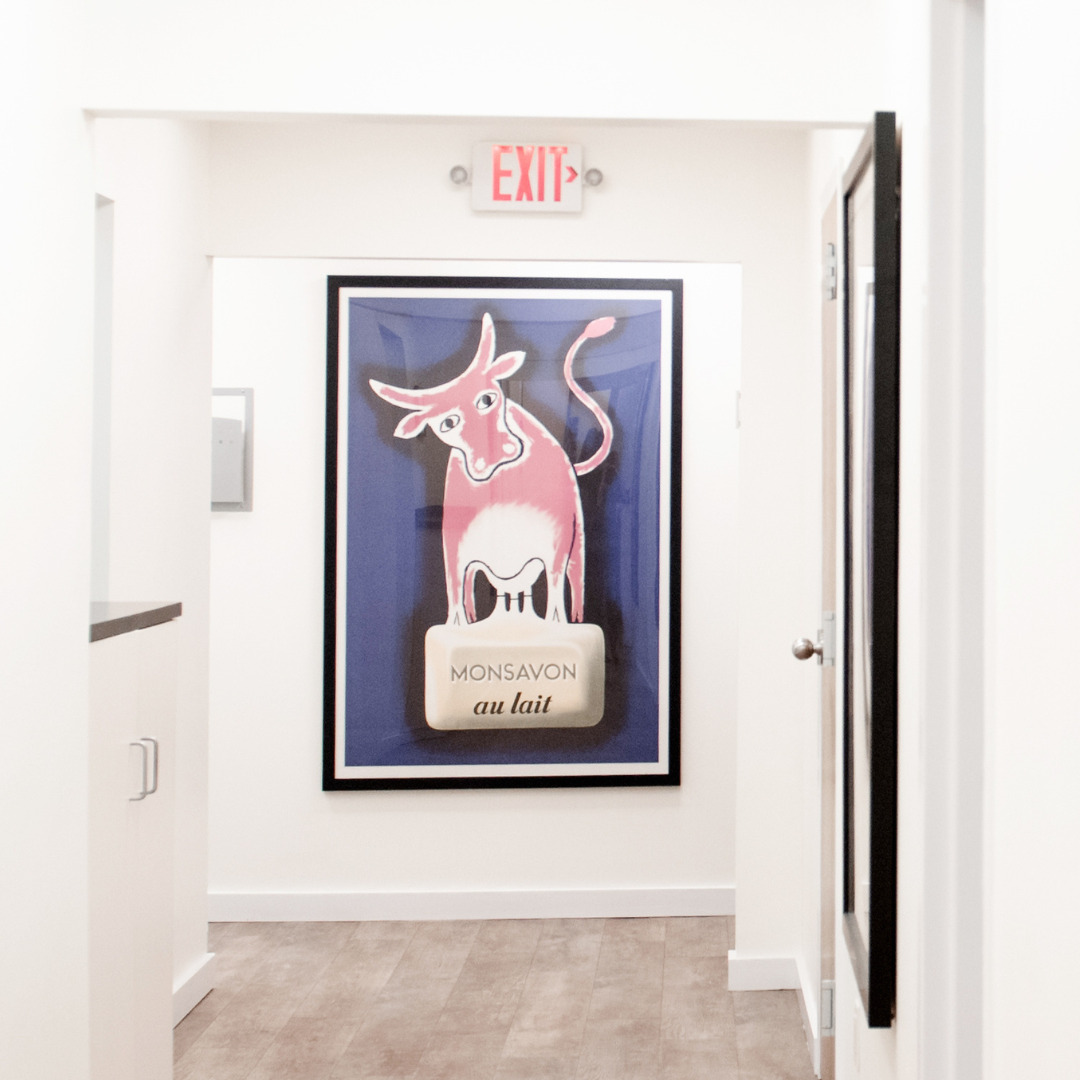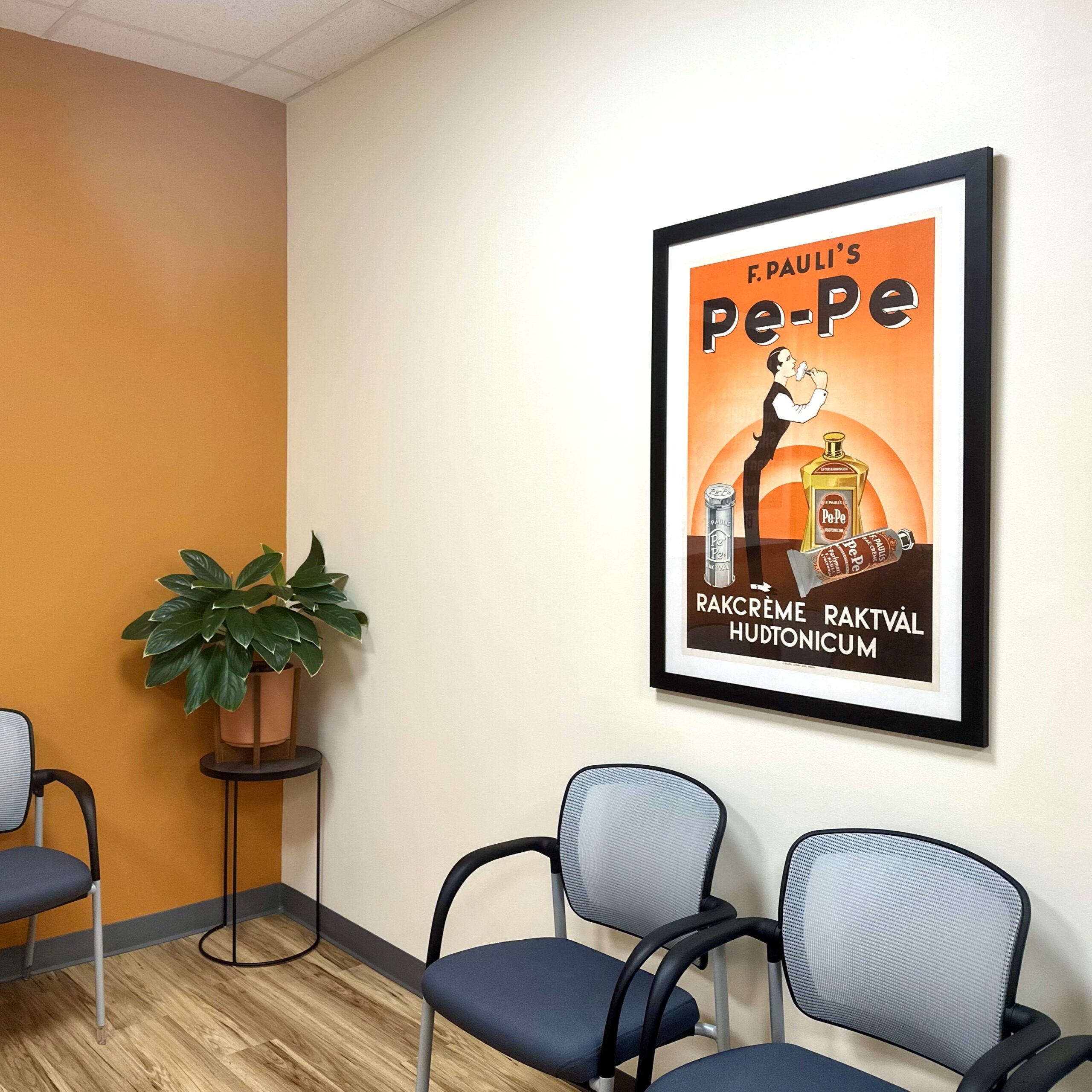Medical and Cosmetic Skincare Services in New York, NY
HUDSON DERMATOLOGY:
BECAUSE YOU DESERVE THE VERY BEST
Every physician at each of Hudson Dermatology’s eight locations is board-certified and committed to providing quality skincare built on a foundation of advanced technology and techniques. All treatments—medical and cosmetic—are highly personalized and chosen for their safety and results.
Medical and Cosmetic Skincare Services in New York, NY
HUDSON DERMATOLOGY:
BECAUSE YOU DESERVE THE VERY BEST

Every physician at each of Hudson Dermatology’s eight locations is board-certified and committed to providing quality skincare built on a foundation of advanced technology and techniques. All treatments—medical and cosmetic—are highly personalized and chosen for their safety and results.
Medical and Cosmetic Skincare Services in New York, NY
HUDSON DERMATOLOGY:
BECAUSE YOU DESERVE THE VERY BEST
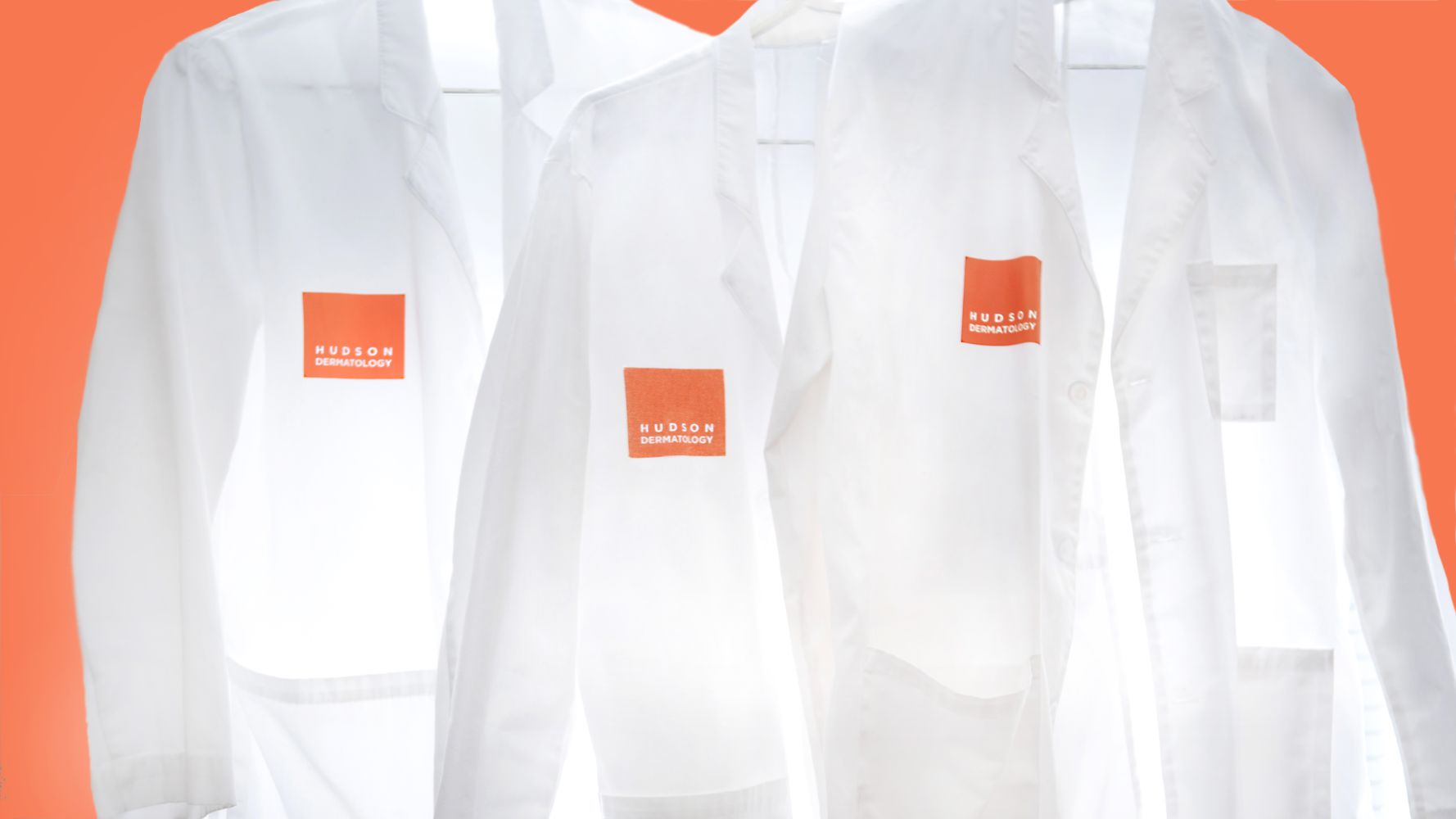
Every physician at each of Hudson Dermatology’s eight locations is board-certified and committed to providing quality skincare built on a foundation of advanced technology and techniques. All treatments—medical and cosmetic—are highly personalized and chosen for their safety and results.
HUDSON DERMATOLOGY IS THE LARGEST INDEPENDENT DERMATOLOGY PRACTICE IN NEW YORK STATE. OUR DERMATOLOGISTS HAVE TRAINED AT SOME OF THE WORLD'S FINEST UNIVERSITIES AND HOSPITALS.


















HUDSON DERMATOLOGY:
GAP-YEAR MEDICAL ASSISTANT PROGRAM
Hudson Dermatology’s Gap-Year Program introduces the next generation of nurses, physician assistants, and physicians to a rewarding path in clinical medicine.

"This was by for the fastest most efficient medical appointment experience I have ever had. The team effectively communicates and gets their patients in and out. I didn't even have time to compile my patient history paperwork by the time I was in and out of my appointment."
— Taylor M, Google Review
"Punctual, friendly and courteous staff. Doctors and Physicians Assistants are all very knowledgeable and thorough. I was treated by Issac PA today, showed him my issue and stated it occurred once about 8 years ago, he took the time to go back through my medical records and look into the course of treatment. I am very thankful for his help."
— Georgeann R, Google Review
"This was my first visit at Hudson Dermatology. The check in process was easy and quick. The office staff was friendly and helpful. My visit was with Corrine Reilly. She was very thorough and knowledgeable. Her friendly, pleasant personality made me feel very comfortable. She clearly explained what she was doing. I would definitely recommend this office to a friend."
— Patricia H, Google Review
"I can't say enough positive things about Hudson Dermatology and Dr. Kezis. They are very professional and caring. The office is clean and beautifully decorated. The wait time to see the Dr is always minimal. Dr. Kezis is an excellent dermatologist!! He is thorough, caring and takes the time to explain what he is doing and why. He addresses all my concerns and discusses his plan of treatment. He always puts my mind at ease. Hudson Dermatology is by far the best in the area!"
— Terri M, Google Review
"Dr. Jaiani was kind and warm with my 7-year-old during his first visit. He explained everything and made me feel comfortable as a parent. The office is clean and welcoming, and we did not feel rushed at all. All staff was friendly and helpful."
— Liz S, Google Review
SKIN EXAMS ARE AS EASY AS A-B-C
Reducing skin cancer risk starts with prevention: Avoid exposing your skin to ultraviolet rays between the sun’s peak hours of 10 am and 4 pm, wear sunscreen when going outside, never use a tanning bed, and stay hydrated. Next, be sure to perform regular self-checks to spot suspicious lesions. What makes a mole suspicious? Follow the ABCDEs.
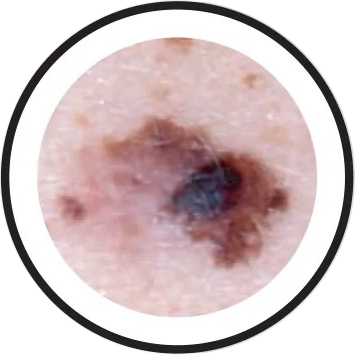
EXAMPLE MELANOMA
ASYMMETRY
Moles are typically symmetrical, which means the right side is basically a mirror image of the left. Cancer cells often grow in a way that causes asymmetry, so watch for lesions that are not generally round or are otherwise misshapen.

EXAMPLE HEALTHY MOLE
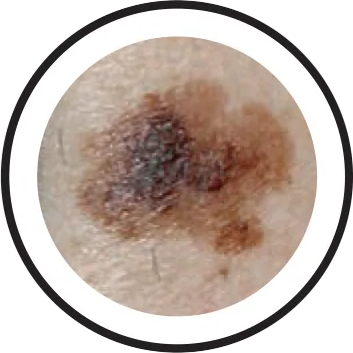
EXAMPLE MELANOMA
BORDER
A normal mole will have a distinct and well-defined border. Finding a lesion that has scalloped, notched, or “hazy” edges can indicate the presence of cancer cells and should prompt a closer examination by an experienced dermatologist.

EXAMPLE HEALTHY MOLE
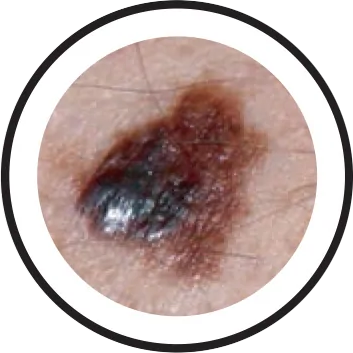
EXAMPLE MELANOMA
COLOR
While moles come in many colors, they are almost always uniform—meaning a brown mole is fully brown. Lesions that feature multiple colors are a concern, as are those that are especially dark, black, or an unexpected hue.

EXAMPLE HEALTHY MOLE
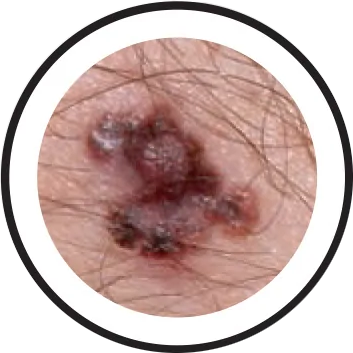
EXAMPLE MELANOMA
DIAMETER
The larger a mole is, the more suspicious it is—at least past a certain point. Single out anything bigger in diameter than a pencil eraser for scrutiny in case its size indicates that the lesion in cancerous.
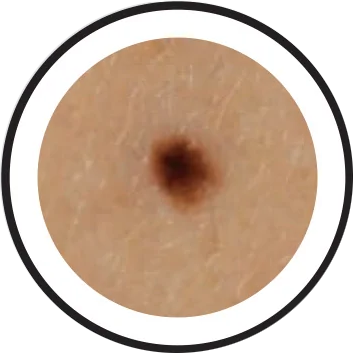
EXAMPLE HEALTHY MOLE

EXAMPLE MELANOMA
EVOLVING
Cancer cells divide rapidly, which means that malignant moles often evolve in a way that other moles don’t. Changes may include size, shape, color, or all of the above. Also, be aware of moles that have evolved to be “ugly ducklings,” meaning they stand out from the rest.
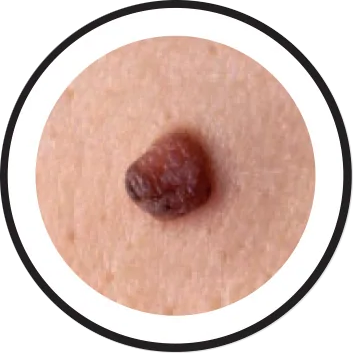
EXAMPLE HEALTHY MOLE
SKIN EXAMS ARE AS EASY AS A-B-C
Reducing skin cancer risk starts with prevention: Avoid exposing your skin to ultraviolet rays between the sun’s peak hours of 10 am and 4 pm, wear sunscreen when going outside, never use a tanning bed, and stay hydrated. Next, be sure to perform regular self-checks to spot suspicious lesions. What makes a mole suspicious? Follow the ABCDEs.
ASYMMETRY


Moles are typically symmetrical, which means the right side is basically a mirror image of the left. Cancer cells often grow in a way that causes asymmetry, so watch for lesions that are not generally round or are otherwise misshapen.
BORDER


A normal mole will have a distinct and well-defined border. Finding a lesion that has scalloped, notched, or “hazy” edges can indicate the presence of cancer cells and should prompt a closer examination by an experienced dermatologist.
COLOR


While moles come in many colors, they are almost always uniform—meaning a brown mole is fully brown. Lesions that feature multiple colors are a concern, as are those that are especially dark, black, or an unexpected hue.
DIAMETER


The larger a mole is, the more suspicious it is—at least past a certain point. Single out anything bigger in diameter than a pencil eraser for scrutiny in case its size indicates that the lesion is cancerous.
EVOLVING


Cancer cells divide rapidly, which means that malignant moles often evolve in a way that other moles don’t. Changes may include size, shape, color, or all of the above. Also, be aware of moles that have evolved to be “ugly ducklings,” meaning they stand out from the rest.









